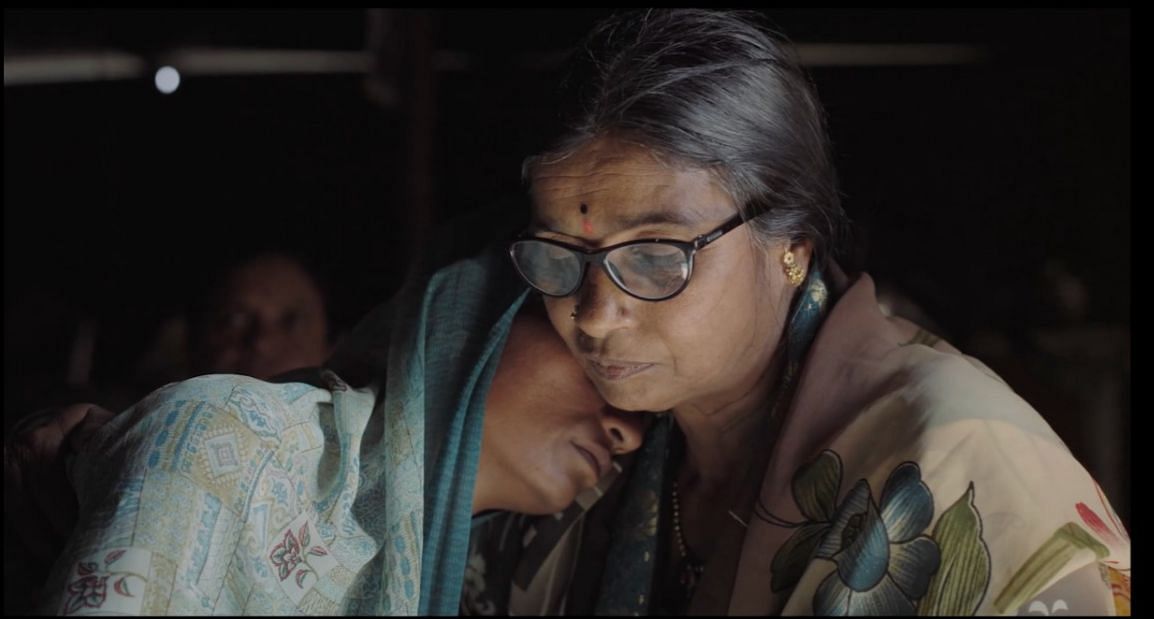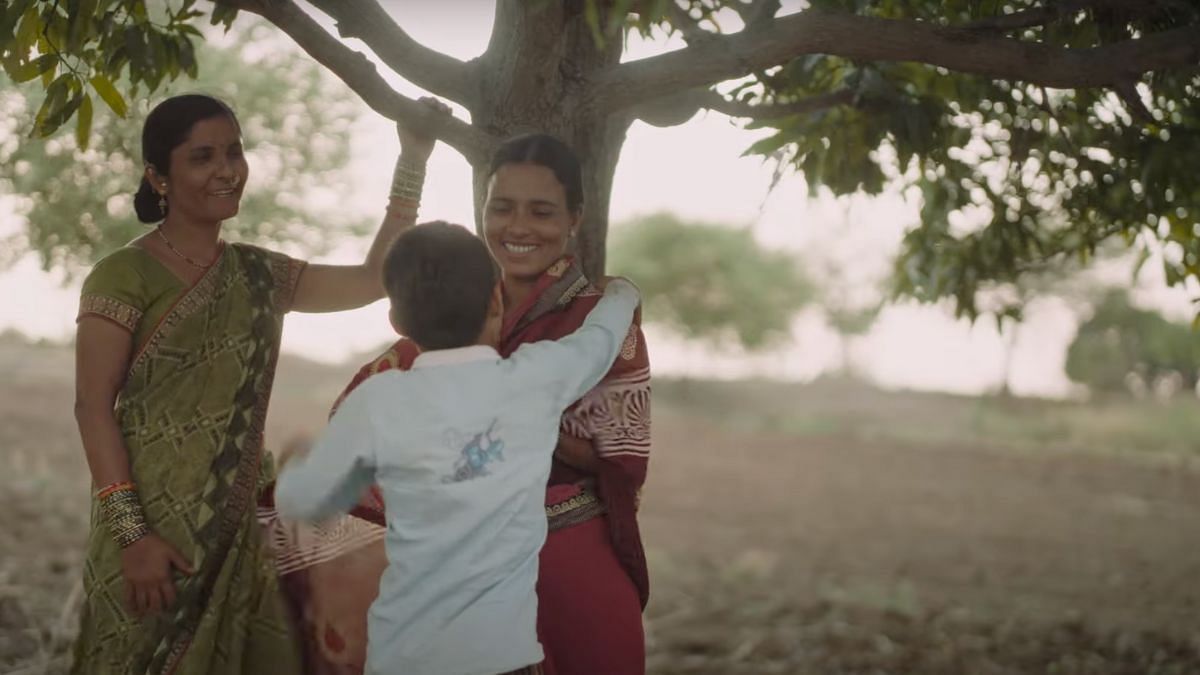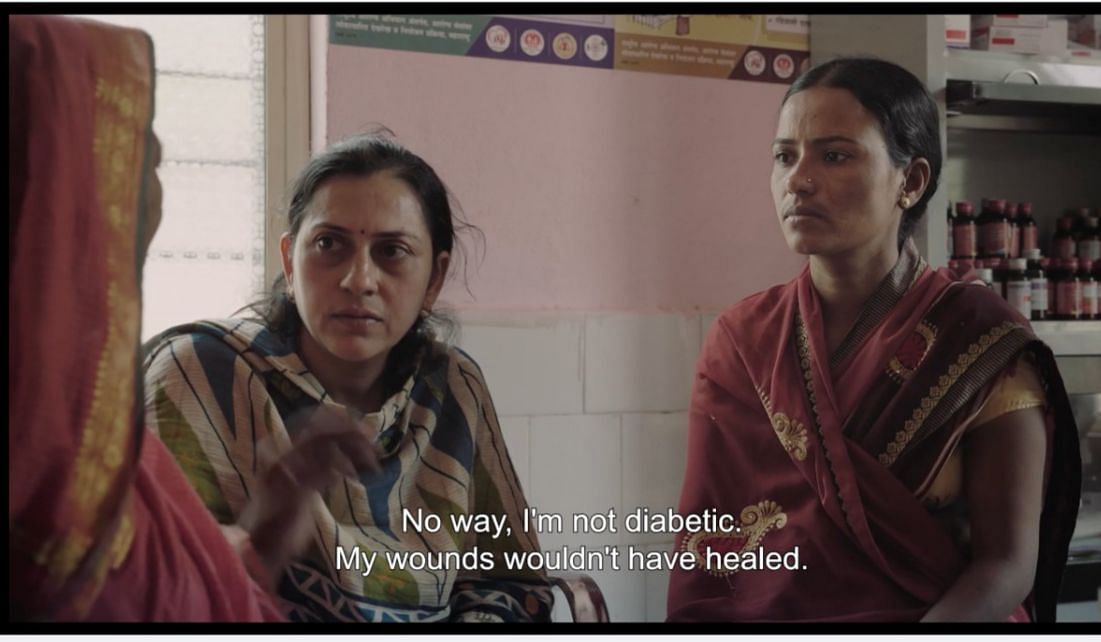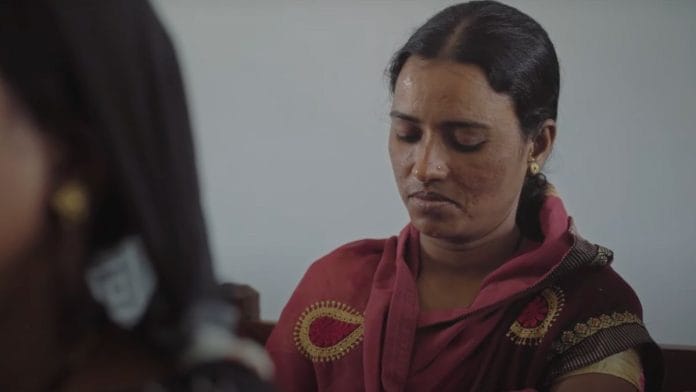New Delhi: More than 550 farmers in Maharashtra died by suicide between January and June this year. Kinshuk Surjan wanted to know about the families they left behind–the wives, children and parents. The result—a 105-minute-long Marathi-language documentary, Marching in the Dark—draws attention to the resilience and ties of friendship among the women left to pick up the pieces of their lives.
Surjan’s experience growing up in a “family of farmers and journalists” informs every twist, turn and texture of the film. His grandfather, a farmer from Berdi village in Madhya Pradesh, would often talk about the worsening condition of their farm and orchards.
“Together, we created a space for healing and expressing,” said Surjan, who spent five years bringing his documentary to life. He travelled across drought-prone Beed, meeting with families.
“I met recently widowed women, their tears exhausted, their grief hanging in indefinite silence, that being a passer-by felt criminal, the thought of filming even more cruel. Their suffering was compounded by financial stress and grave social ostracisation that secluded and confined widows to their homes,” he wrote in his note on the film. But there was also resilience.

He wanted to make a documentary where the women were as much a part of the process. To do this, he worked with NGO Manav Lok to set up counselling sessions for them.
“The aim was to create spaces for emotional healing, foster friendships, and nurture solidarity. Gradually, the space transformed where women questioned the taboos and orthodox patriarchal traditions,” he told ThePrint.
Capturing transformations
Sanjivani Bhure (32) is a central figure in the documentary, shot between 2019 and 2024 and set in the Sungaon village of Maharashtra’s Beed district. She toils in the fields to support her young son and daughter – all while trying to repay her dead husband’s crushing debt.
The pressure of settling a loan forced her husband, a sugarcane and soybean farmer, to take his own life in 2016. But Bhure didn’t break – she sold the family’s land and tractor to tide over the crisis. Her transformation from a shy and reserved wife coming to terms with her husband’s death to a confident woman is a heartwarming story arc.

Sanjeevani found a measure of solace and support in NGO Manav Lok’s counselling sessions, which feature in Surjan’s documentary.
“I have got the courage to live. And if I can inspire other women, there is nothing better than that,” she said.
Once shunned by village women as a harbinger of misfortune, Sanjeevani is now a respected figure in her community.
“There was a time I wouldn’t even step out of my house. Today, I go out to work. I used to hesitate to speak, but now I feel far more confident,” she said, reflecting on the personal growth that occurred in the process of shooting Surjan’s documentary.
The camera captures every moment of this painful but rewarding transformation. Her family is unhappy when she decides that she no longer wants to remain confined to the house. There’s tension in her interactions with other villagers and even her children. The lack of a support system or any form of grief counselling amplifies the struggle.
Surjan and Manav Lok’s counselling initiative allowed women like Sanjeevani to come together in a safe space and articulate their pain. “Listening to someone else’s grief eases your own burden, after all,” she said.
Today, Sanjeevani works with Manav Lok to help other women in similar situations.
“I help widows and those who have faced any form of violence,” she told ThePrint over the phone
After five years of organising the meeting spaces featured in the film, Surjan hopes to pass on this project to well-resourced NGOs in Maharashtra. “The dream is to see it inspire other organisations to adopt and expand ‘Maitri Gats’ for widowed women, much like the existing Bachat Gats (women’s savings groups), ensuring it not only continues but also grows.”
Also read:
Flipping the lens
Initially, Kinshuk Surjan just wanted to tell the story of Maharashtra’s farming community by focusing on its men.
“I wanted to humanise those suicide numbers, to find a face within the data—a story of someone grappling with this crisis, a microcosm of the countless faceless tragedies.”
But after months of reporting and meeting with families, he flipped the lens. Women like Sanjeevani unveiled a new dimension, reframing the story entirely.

“It wasn’t about how men and women handle grief differently. It was about the ones left behind, enduring in the shadows. As I learned about them, I learned about grief itself—its depth, how it lingers and changes you over years,” he explained.
Surjan shares an enduring bond with farmers. One-half of his family consists of them, while the rest are journalists associated with the Hindi newspaper Deshbandhu. Most of his family, thus, subscribed to Gandhian-Nehruvian socialist ideals, and he was raised reading Hindi literature that criticised the feudal class structure.
“There is a political consciousness and it is also personal. The farmers’ march in 2018 was the moment that triggered me to dive deep into the subject,” he said.
The November 2018 protest, where tens of thousands of farmers in Maharashtra marched to Mumbai to demand loan waivers and transfer of forest land, caught Surjan’s attention. He was in Brussels, Belgium, at the time. The march, which happened at night, also inspired the name of his docu-film.
“The name came before anything else.”
Surjan steers clear of the political dimension of farmer suicides. “I have no faith in governments or politics.”
Also read:
What cameras captured
Since its first screening in October 2024 at the Jio MAMI Mumbai Film Festival, Marching in the Dark has received multiple international awards at festivals in Zurich, Tel Aviv, and Italy. It was even shortlisted for the Oscars’ Best Documentary Feature category this year but couldn’t make the cut.
“It was such a long journey that I feel rewarded by every quote and every compliment for the film, and yet want this film to be seen as widely as possible,” said Surjan.
The cinematography by Leena Patoli, Carl Rottiers and Vishal Vittal adds depth to the narrative.

The camera penetrates the most personal of spaces — bedrooms to kitchens — without being intrusive. In many sequences, it is just inches away from the expressive faces of the women being interviewed. But it doesn’t feel wrong.
“Camera as a device by construction merely sees the surface. But a person’s depth is immediately visible when they are framed,” said Patoli.
Sanjeevani is “a nuanced, emotional woman”, Patoli stressed. “The life she has lived reflects in the way she breathes, laughs, deals with her frustrations and in the glow and textures of her resilient skin.”
Most of the film was shot during a heatwave, and the team often got heat strokes. But the emotional strain outweighed the physical discomfort.
“The mental toll of filming in a home where a suicide has recently occurred still clings to me. Given the continuous filming, I didn’t know what I was going through till much later. I tried to offer as much understanding as one could with the camera,” Patoli said.
A photograph of Sanjeevani’s daughter Babli was Patoli’s screensaver for the longest time.
“It helped me keep going on difficult days.”
(Edited by Zoya Bhatti)






